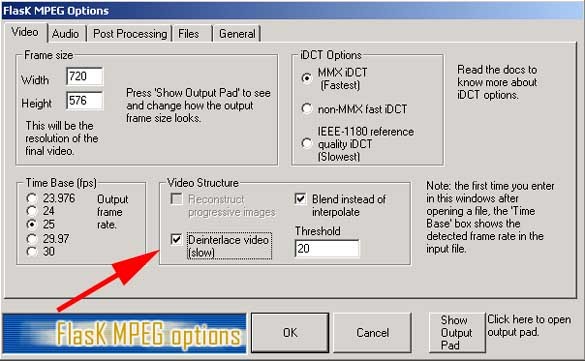MPEG-4: Optimization of Picture Quality and Data Rate
Trimming: Without Edges A Lower Data Rate!
The highest resolution is 720 x 576 pixels and, thus, corresponds to a full PAL resolution. The resolution of the represented sequence is,actually lower, as the letterbox edges (16:9 format) have been removed.
A further measure for minimizing the data rate consists in removing the letterbox edges that often exist on a DVD video. The edges are attributable to the 16:9 picture format (cinema format).
Flask Mpeg allows any format and additionally allows lines and columns to be removed. With most DVD videos that have been shot in 16:9 format, the letterbox-bars are removed both in the upper and lower area by trimming.
This procedure increases the time required by the computer for the encoding, but the data volume is optimized as a result of the reduced data rate. In our test sequences, we were able to establish a reduction in the data rate of around 5 percent solely through trimming.
15 Percent Less Data Stream: Enable Deinterlace!
By enabling the "deinterlace" function with the Flask Mpeg encoder the data volume can be lowered by up to 15 percent without reducing the picture quality, although the encoding takes longer.
De-interlacing represents a further step in optimizing the data rate. Flask Mpeg offers this option via one of its video menus. When the "deinterlace" function is enabled, two neighboring pixels within a picture are approximated, i.e. a mathematical approximation or calculation ensues. The result is a picture, which is characterized by marginally less sharpness but a less coarse presentation. This function can virtually be compared with the soft focusing facility in image processing programs. De-interlacing increases the encoding time by at least 50%. The following two video sequences are coded with and without "deinterlace".
Get Tom's Hardware's best news and in-depth reviews, straight to your inbox.
Current page: Trimming: Without Edges A Lower Data Rate!
Prev Page Compromise: Quality Vs. Resolution, Continued Next Page 15 Percent Less Data Stream: Enable Deinterlace!, Continued
